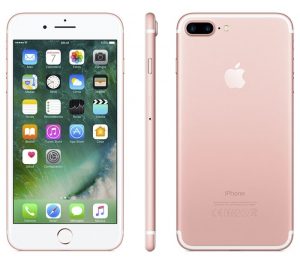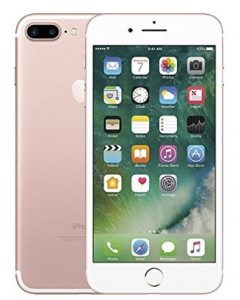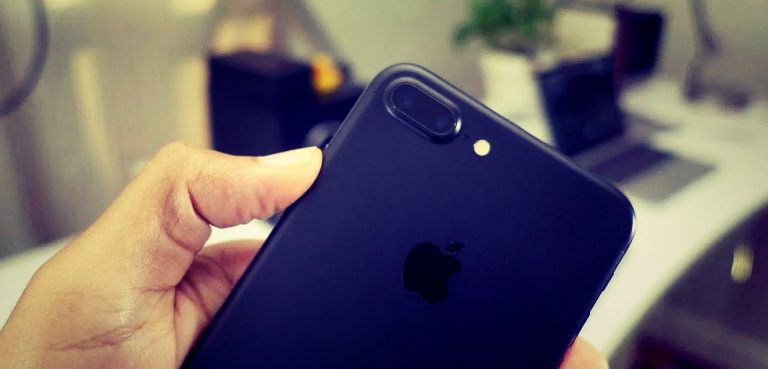Apparently the Apple iPhone 7 Plus may seem more of the same, but if we dig a little, as we’ve done in this review, we start to find interesting difference. A new iPhone that surprises with its performance and excellent camera. Enjoy the most complete analysis of the iPhone 7 Plus.
Many doubts in the environment
I’ve spent the last seven days living with him so I can do this iPhone 7 Plus analysis. A week in which I have not stopped listening again and again fundamentally two questions: Is it the iPhone 7? Is it worth it?
For my work I am used to my friends and acquaintances, known to my profession, to ask me these kinds of issues, but in the case of this new iPhone have been overwhelming and, above all, symptomatic.
And no one stops being able to distinguish the new iPhone with the naked eye and there are many who show their disbelief by seeing that Apple repeats design for the third time in a row. In addition, everyone, almost without exception, dares to question its goodness, and there is a sense of a certain belief in the environment that Apple tries to «sneak» the same product once again.
In this review of the iPhone 7 Plus we will try to solve these, and many other doubts about the latest Apple smarphone: Can you live without a headphone connection? What is the double camera for? What is the new home button like? Can I use it in the pool? Is it as powerful as they say?.. Stay tuned.
Continuous design that hides the differences

It is true that at first glance this iPhone 7 Plus may seem excessively familiar, it is undeniable that except for the presence of the striking dual camera little or nothing seems to have changed in terms of design, but if we look a little more in depth is when we will start to perceive those little nuances that make it different.
A first detail is found in the bands that protect the antennas on the back, which see its extension reduced by eliminating the two stripes that traveled the terminal from side to side, leaving only those that contour the upper and lower area of the new iPhone, a more discreet location that even goes unnoticed in the darker colors: matte black and the controversial black jet.
Also in the rear area we find the dual camera that we will analyze in depth a little later, much more striking than that of the previous models and with a more pronounced bulge that, as a small inconvenience, makes the use of the phone supported on a flat surface more uncomfortable by the constant swinging when interacting with the upper area.
Between the camera and the new 4 LED flash, the noise-cancelling microphone is located during calls. This is one of the three microphones that this has the 7 Plus, yet the sound recording, including that of the videos, is still done in mono.
The left side of the terminal is located the volume controls and the mute switch; in the right area, in addition to the power and lock key, we find the tray for the nano-SIM card, with a small novelty: a small rubber to prevent the entry of water, an aspect to take into account since from now on if you need an emplazo for this element must be exclusive for iPhone 7 or iPhone 7 Plus.
The front repeats, and is a strictly personal opinion, the redundant errors of other versions, an almost sickly symmetry that makes this iPhone 7 Plus maintain a disproportionate size in relation to its screen size. Unfortunately this looks like a lost battle, so it’s not worth spending much more time on it. Apart from this, despite the constant leaves wow, the front hides some surprise.
The main one is the renewal of the home button, undetectable at first sight, now it is no longer a button as such, but a flat, round piece that no longer physically sinks when pressed, and that is able to distinguish between pressure or simple rubbing.
To create the pulsation effect it resorts to a brief but intense vibration provided by Apple’s new Taptic Engine or «Tactical Engine», this element is not a novelty – it made its debut on the iPhone 6S to provide a slight vibration the «Pop» pulsations, the most intense, on the 3D Touch screen – the difference is that it is now bigger and more powerful.
Such is the importance of this new element that is, indirectly, one of the reasons why Apple has removed the headphone jack, because in addition to being a way to guarantee a better waterproofness, it frees up a valuable interior space that has enabled, in addition to scratching a few more milliamped stories to the battery, the power to include this larger and more powerful engine.
The adaptation process is non-existent, and the result surprising. The feeling is similar, almost identical, to the feeling of pressing the physical button, but without the annoying «crunch» that gradually intensifies over time – anyone who has an iPhone will be able to attest to it. Apple’s good work in this regard, because as an added value it is possible to improve the resistance of one of the most historically delicate parts of the iPhone.
As for the integrated Touch ID fingerprint sensor, it already reaches its second generation although there are few differences in terms of speed and reaction time – it was already with the best by far – perhaps the most remarkable thing is a decrease in an already very low error rate.
Sound, better and taller

The front also hides a second novelty that you don’t see, but if you listen: the headset now works like a second speaker, allowing for the first time the iPhone can play stereo sound through its speakers.
The result is a more powerful sound, with a clear improvement in dynamic range, but still some distance from the quality shown by some HTC models, pioneer in this type of solutions, and far from being able to be an alternative to medium quality external speakers.
Nevertheless, in certain everyday situations in which it prioritizes the power of sound over quality this improvement is appreciated. Now, for example, you can shower while listening to music without the need for additional speakers, and without fear of water, which is not bad at all.
As you can see in these first steps in the analysis of the iPhone 7 Plus, it adds more improvements than you can see at first glance, although if for one thing it will be remembered it will be for two things: the water resistant and, above all, for being the first iPhone without headphone jack 3.5 mm.
No headphone jack, isn’t there paradise?
As he said during the introduction of his new iPhones, Apple thinks the future is wireless audio. I believe it too, but I also think that deleting the headphone jack does not bring us closer to that future since in my modest opinion there is still no alternative standard that allows us to take this important step.
Let’s not kid ourselves, the 3.5mm jack connector is not perfect, it is old and outdated, but it is one of the most ingrained standards that despite everything, it is still able to deliver audio up to 32 bits when curiously the DAC converter of the current iPhone only reaches 16 bits. So the quality improvement argument can be quickly disassembled.
In addition, until now we could find almost any device, with the certainty of being able to use the same headphones in an old sound system or on a state-of-the-art mobile.
Apple basically offers us three solutions to deal with the absence of the 3.5mm audio jack: using an adapter that allows us to upgrade our current headphones to the lightning connector, buy a bluetooth or lightning headset, or use the EarPods headphones included as standard the iPhone 7 Plus, the latter the least recommended in my opinion.
The aforementioned adapter is included when buying a new iPhone, it would be missing more, and the extra units cost just under 10 euros. A short, fyd-looking adapter that, despite what it may seem, is a small piece of engineering, as it includes inside a tiny digital-analog converter (16-bit DAC) that surprisingly fulfills its task perfectly.
The loss of quality is minimal compared to the jack connector of an iPhone 6S, the most educated ears will be able to detect a slight loss of bass frequencies, but will go unnoticed by most mortals. However, I don’t think this justifies Apple’s decision.
I love listening to music and podcast on mobile, it is something that I do continuously in the office, at home or in the gym, and after only a week of daily coexistence for this analysis of the iPhone 7 Plus there have been numerous occasions when due to the lack of habit perhaps, I have forgotten the small adapter leaving useless my «prehistoric headphones». If playing sport is hard, imagine it without music… Thanks Apple.

In addition, you can not charge your phone and listen to music at the same time, something that in the era of external batteries is more problematic than it may seem at first (think about it…).
Given what you’ve seen, do you have any advantage for the absence of the headphone jack? Beyond leaving room for the battery, the commented tactical engine and improve the watertightness (something others have achieved without taking this step), little or nothing the truth.
It is true that the most audiophiles can take advantage of some advantages; using a digital connection such as lightning allows energy to be drawn from the battery to power the noise cancellation systems, and better DAC converters could be included in the headphones that the small adapter integrates from, giving them better sound quality. The «problem»: all this could be done before without having to sacrifice the 3.5mm jack.
Apple has taken a brave step, but it’s clearly hasty. You can’t pretend to change a standard as ingrained as the 3.5mm headphone jack when your alternative, beyond bluetooth – still very upgradeable at all levels – is a proprietary connector that only your own products use.
The problem is that as on other occasions Apple ends up setting the trend, and that despite the initial taunts and squats of other manufacturers, the beginning of the end of the headphone jack is precipitously anticipated. Time will tell.
The iPhone 7 Plus puts on your swimsuit
Although never officially, it is known that Apple had already taken some steps to provide its smartphones with water resistance. There are many cases found of iPhone 6 and 6S that have come out unscathed from some unintentional dip, so the water resistance – which does not approve of water, eye to nuance – has not caught us by surprise.
The iPhone 7 Plus isn’t thinking about open water dives at great depths, nor is it even recommended for use inside a pool.
It is IP67 certified, or what is the same: extreme dust resistance and the ability to withstand water dives up to 30 minutes up to a maximum of one meter deep, although this does not mean that under these circumstances it continues to operate normally.
In fact the touch system becomes a bit crazy with water droplets, and it is not possible to interact with the screen if it is fully submerged.
The whole point is that you don’t have to worry about rain, unforeseen spills of liquids and fortuitous dives at shallow depths (and you haven’t happened to me, but there are people who drop their cell phones in the toilet).
However, you should keep in mind that, and it is something that happens with the vast majority of submersible mobile manufacturers, the damage caused by water is not covered by the warranty. It may seem somewhat contradictory, but it is true that it is difficult to be able to prove that a malfunction caused by water is due to an anomaly of the phone, and not to an abuse of this feature.
Screen still waiting for generational change

Perhaps next year, when the tenth anniversary of the first iPhone is to take place, Apple will finally take the risk of making the leap to a new generation of OLED displays. For the time being, it persists in its efforts to continue solving a technology such as the IPS LCD that seems to be no longer left much juice.
The iPhone 7 Plus’s display maintains the same size as its last two predecessors: 5.5 inches and 1920×1080 pixels resolution. In addition, it shows very similar contrast levels, although it includes slight improvements.
According to Apple it is up to 25% brighter (691.7 Cd, 11% if we stick to the tests carried out by our Computer Bild colleagues) something that is evident when it comes to visualizing the screen outdoors with a lot of lighting. Although the laboratory values still place it one step below Samsung, at the highest brightness level it is possible to interact with the screen comfortably in virtually any circumstance, even under the most intense direct sun.

